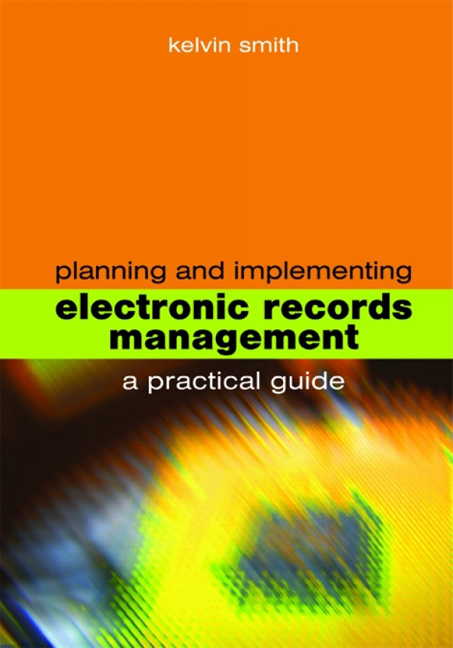4 - Main issues for design
from Part 2 - Design
Published online by Cambridge University Press: 08 June 2018
Summary
This chapter examines the three main issues that will affect the design of your electronic records management system: requirements, metadata and policy.
Before embarking on a general discussion of development of the requirements, it may be useful to describe the different systems that are available and which, for the purposes of this book, are described as ‘electronic records management systems’.
For several years we have had electronic document management (EDM) systems. These help organizations to provide better access to information and in particular to support workflow arrangements typically undertaken by team working. They also enable organizations to exploit their information resources more effectively – it is difficult to imagine how we could have provided the same level of information with paper systems as we do now with such electronic systems. EDM generally supports immediate business needs and does not embrace all records management functions (e.g. disposal). It will usually only handle information at the document level. It typically provides for:
• storage of records
• version control
• indexing
• search and retrieval
• access control
• ability to archive offline
• audit
• interface with other systems such as workflow and document image processing.
Electronic records management (ERM) systems add standard records management practices to EDM. These include a corporate filing structure and disposal scheduling.
The requirements would typically include the following, in addition to those provided by an EDM system:
• management of information as corporate information (including the ability to declare records corporate as and when required)
• storage, indexing, search and retrieval of all types of records and documents
• management of information in a way that maintains links between records
• record level metadata describing contextual information
• management of hybrid records
• authentication of information
• support for legal and regulatory requirements
• appraisal and disposal of records
• export of records for permanent preservation.
Electronic document and records management (EDRM) systems are largely exactly what they say. EDM systems have been extending their functionality to include specialist packages that are common in ERM systems. The result is an integrated system.
- Type
- Chapter
- Information
- Planning and Implementing Electronic Records ManagementA practical guide, pp. 57 - 70Publisher: FacetPrint publication year: 2007



